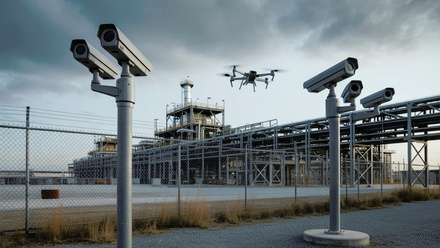Electric Vehicles: navigating risks, regulation and readiness in the age of e-mobility
Electric vehicles (EVs) have moved from the margins to the mainstream of European transport. As governments intensify their climate commitments and urban areas seek cleaner mobility solutions, EV adoption continues to accelerate. Whether through EU Green Deal targets, low-emission zones, or shifting consumer demand, the electrification of transport is not only inevitable—it’s already underway.
But with this growth comes a shift in how we must think about safety. While EVs offer clear environmental advantages, their emergence presents new challenges for fire protection and emergency preparedness. From battery behaviour to charging infrastructure, the entire risk landscape is evolving. Fire safety and security professionals now find themselves at the forefront of adapting to this change.
Understanding the evolving risk landscape
It’s important to acknowledge that EVs are not necessarily more prone to catching fire than traditional vehicles. However, the nature of the fires they can produce is significantly different. Lithium-ion batteries—the heart of electric mobility—are energy dense and, when compromised, can enter a state known as thermal runaway. This process can result in fires that are intense, unpredictable, and very difficult to extinguish.
Unlike internal combustion engine fires, EV fires can begin hours or even days after an accident or mechanical failure. Delayed ignition, toxic off-gassing, the risk of re-ignition, and chemical instability all make lithium-ion battery fires uniquely complex. Water alone is often insufficient for extinguishment, and in some cases, containment via submersion or encapsulation is the only effective method. Furthermore, towing and storing a damaged EV brings additional challenges. Fire risks don’t end at the scene of an accident—they follow the vehicle wherever it goes.
Infrastructure under pressure
Fire safety concerns don't stop at the vehicle itself. As EV infrastructure becomes more embedded in homes, office buildings, commercial garages, and public spaces, new questions arise. Are charging stations being installed according to fire-safe design principles? Are underground or multi-storey parking facilities adequately ventilated and equipped to manage a lithium-ion battery fire? Do facility managers and first responders know how to react to charging-related incidents?
With smart charging networks on the rise, cybersecurity and remote access risks also become part of the conversation.
Euralarm recognises that charging infrastructure is now a key element of the built environment. We advocate for clear design and installation standards that reflect the dual imperatives of energy efficiency and fire safety. Europe cannot afford to have fragmented safety requirements in buildings increasingly fitted with EV charging points.
How fire services are responding
Across Europe, fire brigades are adjusting to the demands of e-mobility. In some regions, specialised protocols have been developed for responding to EV fires. New tools—such as high-temperature-resistant fire blankets, battery fire extinguishing or suppressing agents, and submersion containers—are being deployed. Training exercises are evolving to include electric vehicle scenarios, and collaboration with automakers is improving access to vehicle data and guidance.
However, this progress is not uniform. Some fire services have developed sophisticated response strategies, while others are still catching up. Bridging this gap requires coordinated action. Knowledge must be shared across borders, and fire services must be supported with the training and resources needed to safely manage these new risks.
Euralarm actively promotes the exchange of best practices and supports public-private dialogue aimed at strengthening readiness. Safety innovation must be driven not just by technology providers, but by the people who use and respond to that technology every day.
The regulatory landscape: gaining momentum, but still incomplete
Regulatory efforts to address EV fire risks are growing, but much work remains. Building codes are being updated to accommodate EV infrastructure, and efforts are underway to define technical standards for battery fire detection, extinguishment and suppression. Still, many gaps remain—particularly in regulations for charging stations, battery storage, and recovery procedures for damaged vehicles. Euralarm therefore calls on policymakers to include fire safety into the new regulations.
For example, clear European-wide guidelines on how to store or transport a damaged EV do not yet exist. Nor are there comprehensive rules governing the fire safety performance of charging points installed in older buildings or underground car parks.
As part of its mission, Euralarm supports a regulatory environment that keeps pace with innovation. We believe that standardisation across member states is essential—not only to ensure safety, but also to enable the smooth functioning of the internal market for fire and security solutions and to ensure that end-users do not have a wrong perception because things are managed differently in their home country.
An integrated approach to fire and security
One of the defining features of the EV ecosystem is its digital backbone. Charging systems are increasingly connected, monitored, and data-driven. This connectivity brings tremendous benefits in terms of optimisation and user experience—but it also introduces new risks. Cybersecurity, system redundancy, access control, and remote diagnostics all become part of the safety equation.
That’s why Euralarm continues to promote a holistic view of safety. Fire detection, extinguishment, suppression, and emergency communication must be integrated into the broader digital and physical architecture of EV infrastructure. Systems should not only respond to threats—they should anticipate and mitigate them.
A safe and secure transition must be a shared responsibility
As Europe moves toward full-scale e-mobility, it’s critical that safety is not left behind. Electric vehicles are here to stay. But the infrastructure and emergency frameworks surrounding them must evolve just as quickly.
Manufacturers, installers, first responders, facility managers, regulators, and safety professionals all have a role to play in ensuring that EV adoption does not outpace preparedness. The shift to electric mobility is a success story in the making—but only if it is underpinned by safety systems that are as advanced and forward-thinking as the vehicles themselves.
At Euralarm, we are committed to supporting this transition. Through regulatory advocacy, standardisation efforts, industry collaboration, sharing knowledge and the promotion of innovation, we will continue to help build a future where Europe’s mobility is not only clean—but also safe, secure and resilient.






